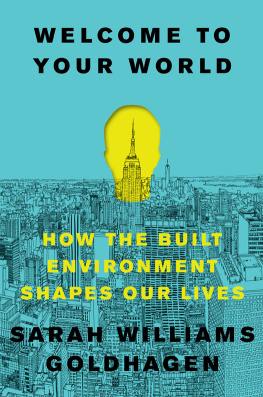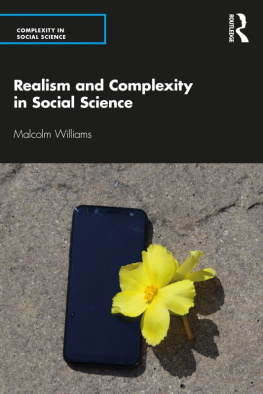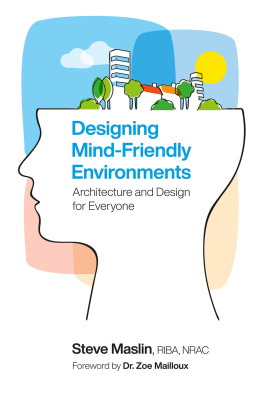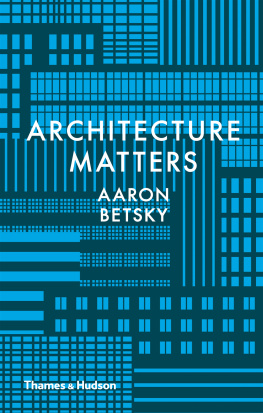I dwell in Possibility
A Fairer House than Prose
More numerous of Windows
Superiorfor Doors
EMILY DICKINSON
Contents
Guide
T his book comes with a bold promise. I, a stranger, welcome you to the world you live in every day. Yet I am confident that as you read what follows, what you know and how you think about your world will shift. It will become a different place than it was before you opened to this page. You will understand your role in it anew. You will realize that it affects you, your children, everybody in profound ways that you never imagined.
How do I know? Because it happened to me.
As a teenager, in the world predating smartphones and GPSs, I was fortunate to travel with my parents in Italy. During one long, searing, stressful car ride, as my father edged our rental car off the highway in the outskirts of Florence, my mothers sense of direction failed her, and we found ourselves lost. We had a map, but north could have been south or southeast or west, for all she knew, and nowhere on the map could she locate the names of the streets on which we were traveling. Stressed, my parents began to quarrel. Then suddenly, they and the car roiled and I found myself, not for the first time, caught in the middle of a titanic rage. Turn left! No, go straight! Look here, no, there, read that sign, thats not what it says... and on and on.
I insisted that my mother hand the map over to me. Quickly I identified our coordinates and told both of them, in a no doubt unpleasantly teenage voice, to be quiet. Solemnly, and pretty much flawlessly, I navigated our way to the hotel, where we registered our names in silence. Then Idesperate to get away, desperate to be alonepromptly announced I was going for a walk.
It didnt matter where; I just started walking. If my high school humanities curriculum contained lessons on Florence and its celebrated role in the Italian Renaissance, nothing of that surfaced. Surrounding me was just another Italian city, charming, but neither more nor less charming than many of the others wed already visited. The path I followed seemed random, a product only of my wanderingly simmering distress.
The crowded street eventually opened into a plaza thick with honking cars, careering around buildings and tourists. A marvelous octagonal edifice was before me, sunken below the level of the street as if it was in the process of slowly burrowing its way back into the earth while also rising high above me. Marking out its height clearly was a grid of greenish-gray pietra serena stripes woven through the blocks of white marble on its facade. Behind this octagona Baptistery, I learnedan enormous cathedral extolled the glory of a defunct God while paying ecstatic tribute to the ingenuity of men. Nor was this all! Next to the cathedrals right flank, stretching skyward, was a lacy confection of delicate pinks, whites, and greens: Giottos bell tower.
My heart soared. Serenity washed through my body. Within minutes, my liberation from the afternoons torrid angst was complete. How could such beauty exist? Who created it? Why greens and pinks? How was it that three buildings in the sudden spectacle of a strange urban square could so utterly transform my mood, my day, andlittle did I know it at the timemy life?
For much of the nearly forty years following that day, Ive been writing about buildings, landscapes, and cities, first as a journalist, then as a professor and historian of modernism and its practitioners, including Louis I. Kahn, the American architect about whom I wrote a book. Ten years of teaching at Harvard Universitys Graduate School of Design immersed me in the architecture of today. My fascination with contemporary practices and ideas precipitated, in turn, an increasing frustration with academic publications limited audiences and constrained forms, so I started contributing essays and reviews to general interest publications. For eight years I wrote as the architecture critic of the New Republic and by now have contributed to a bevy of scholarly and general publications here and abroad.
All this is simply to say that a good part of my professional and personal life has been devoted to trying to answer questions that I asked myself first on that memorable day. Its a journey that has involved traveling widely to explore and photograph buildings, landscapes, and cities, and reading deeply, as I investigated different ways of analyzing and thinking about the built environment. As an undergraduate and then a doctoral student in art history, I learned to appreciate the lasting power of visual languages and artistic traditions, and to consider how such traditions interact with both an individual designers sensibility and a societys impetus toward innovative cultural expression. But art history alone quickly revealed itself to be a tool inadequate to my self-appointed challenge: to understand aesthetic experience. So I sought out insights from the history of technology, social theory, aesthetics, and even linguistics and literary theory.
All the while, I was delving into the writings and drawings of designers themselves, analyzing their styles and artistic visions, excavating the thoughts behind them. I learned of the French Enlightenment ideals underlying eighteenth-century neoclassicism; of the Neoplatonism and organic universalism propelling geometrically oriented designs from Andrea Palladio to Francesco Borromini to Anne Griswold Tyng; of the late-nineteenth-century doctrine of structural rationalism, most powerfully theorized by E. E. Viollet-le-Duc, which influenced some early modernists. I parsed the multifarious interpretations of functionalism, from Ludwig Mies van der Rohes universal space to Richard Neutras psychobiologism to Christopher Alexanders pastiche of sociology and nostalgia in a pattern language. Ideas garnered from all these practitioners and treatises and disciplines fed into an ever-evolving synthetic framework that I was developing to shed light on how and why architects, urbanists, and landscape architects design as they do, and on how people experience the buildings and cities and places that architects design.
I learned a great deal about many things. But I was not satisfied and was still searching for answers to how, and how much, the built environment affects what we think, feel, and do. Only creative writers, it seemed, captured something of what I was trying to explain. The associative, nonlinear, intuitive, and metaphorical thinking in poems and prose passages, some of which I include as epigraphs introducing each chapter, crystallized some essential qualities of how people experience our built environments. My initial questions still remained mainly unanswered.
Seven or eight years ago, I began coming across scattered writingsin social theory, cognitive linguistics, various branches of psychology, and cognitive neurosciencethat intimated a new account of how people actually perceive, think about, and ultimately experience their environments, which of course includes the built world. As I read more, it became apparent that a newly developing paradigm, variously called embodied or grounded or situated cognition, was emerging from the confluence of work in many disciplines, some of them in the sciences. This paradigm holds that much of what and how people think is a function of our living in the kinds of bodies we do. It reveals that mostmuch more than we previously knewof human thought is neither logical nor linear, but associative and nonconscious. This still-emerging paradigm provides the foundation for a model and analysis of how we live simultaneously in this world, inside our own bodies with our feet on the ground; with other people; and in the worlds inside our heads, which are rife with simulations of the worlds we continuously imagine and reshape for ourselves. Human cognition, decision-making, and action are some admixture of all three.
Next page





